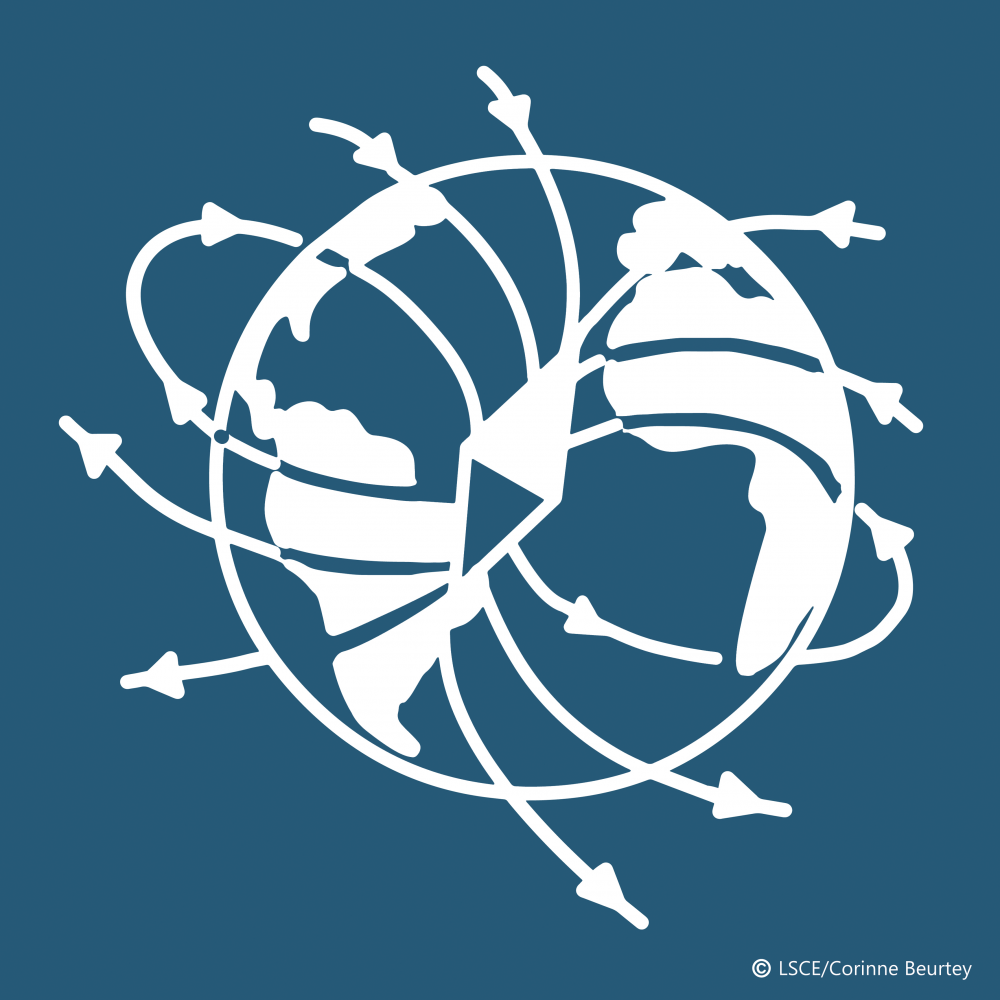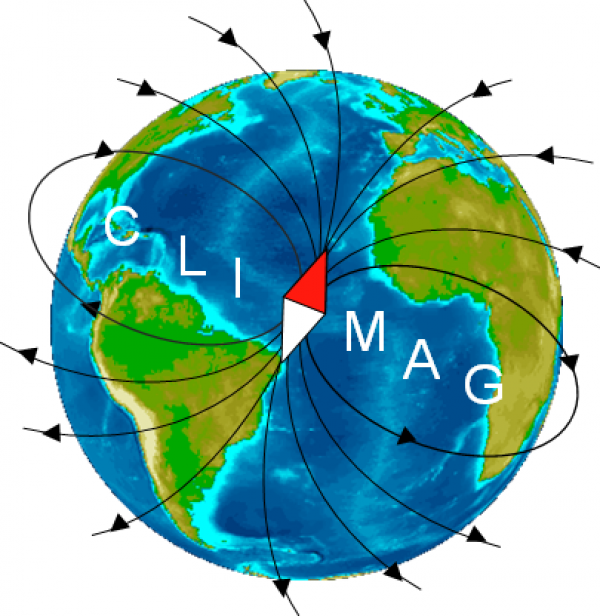The « Climag » team is involved in two main research topics (1) reconstruction of present and past environments by investigating the magnetic properties of sediments, and (2) high-resolution studies of past geomagnetic field variations, a chronometer for long distance correlations of past climatic and environmental changes records.
Magnetic properties of sediments are investigated in various oceanic basins at orbital to submillenial or centennial timescales. Investigations consist in identifying the nature of the magnetic minerals, their size and their abundance in the sediment, as well as the preferential alignment of the elongated grains most likely due to bottom current. These studies are coupled with microgranulometric investigations, also conducted by the team. All these research activities aim to trace the deep marine circulation and also the continental inputs (on land precipitation, erosion, glaciers advances and retreats). This is applied to the study of the past changes in the bottom current intensities in subpolar North Atlantic, Indian ocean and Western Pacific and to changes in Monsoon activity (precipitations on land).
In present day environments, the determination of the physical and chemical properties of the suspended magnetic fraction in fluviatil systems allows to characterize the time and spatial distribution of iron oxydes related to erosion/alteration of the parent rocks, metallic pollution, and associated chemical elements. This is actually studied in the Seine river catchment (France).
Past changes of the geomagnetic field are reconstructed in order to be used as a chronostratigraphic tool. The geomagnetic field, generated in the Earth’s core is independent from climatic changes and it is recorded in many archives at the surface of the earth (lake and marine sediments, ice cores). The recognition of geomagnetic variations in sedimentary sequences allows to evaluate the climatic phasing at the inter-hemispheric scale and more generally between far sided sites provided that a precise reference curve is available. We established such very high-resolution reference curves, well dated because transferred on the Greenland ice annually counted time scale. They are also very calibrated in absolute paleointensity by coupling with the many volcanic data we obtained. This is a key issue for understanding climate mechanisms at the global scale. Tie points for this continuous geomagnetic field intensity records are polarity reversals and geomagnetic excursions which also allow to investigate the dynamic and the morphology of the Earth magnetic field.
All these research activities are based on high-resolution and continuous studies of marine sediment cores and on land volcanic series. Results obtained from both types of recording media are compared, and both are also compared to cosmogenic isotopes measurements in polar ice cores. All these environmental magnetic and paleomagnetic studies require a high temporal resolution, accessible with the high-precision instruments developed in the team, and the organization of land and marine expeditions for collecting land and marine samples.
All these research activities are developed within the frame of national (INSU, ARN) and international research programs ((LIA).
Magnetic studies conducted in the Climag team are based on an instrumental panel specifically adapted for high resolution continuous measurements of low magnetizations and of their characteristics, particularly in sedimentary series. On our request, the 2G-Enterprises company developed specifically designed cryogenic magnetometers. These instruments are equipped with high-resolution superconducting sensors, and they are placed in a µmetal shielded room. A panel of instruments dedicated to measurements of magnetization and magnetic properties of lavas is also installed in our laboratory, including specific paleointensity furnaces developed at the LSCE together with the PYROX company. The development of all these specific instruments in the Gif team has contributed to their spreading in many paleomagnetic laboratories around the world. This instrumental panel is accompanied by high performance equipments for studies of magnetic mineralogy and sedimentary magnetic anisotropy.










